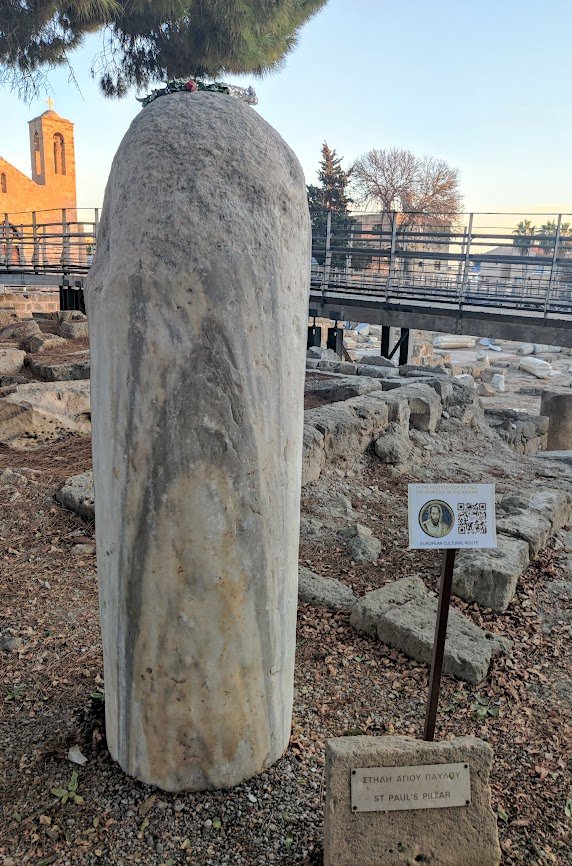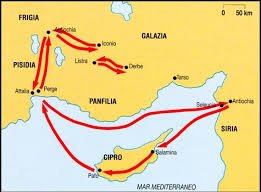"In the footsteps of Saint Paul, the Apostle of the nations" - Cultural Route
A Cultural Route highlighting the cultural values, heritage and legacy of Saint Paul’s missions to Europe,
to honour Saint Paul, as the Apostle of the nations, through his epistles and intangible heritage in literature, arts, history, philosophy, theology and Christianity in Europe,
towards regenerating the European ideals, with sustainable cultural tourism development and promotion along the route in several countries, regions, cities, islands, local communities and tourist destinations


First Mission (to Cyprus)
The mission of St Paul, the Apostle (in Greek ‘Απόστολος Παύλος’, Apostolos Pavlos) in Pafos and Cyprus was his first journey outside Palestine, preaching to the Gentiles (non-Jews). Its success influenced the follow-up of his next two very successful missions in Asia Minor and Greece. A Jew by origin and educated in the Greek language and civilisation, Paul was also a Roman citizen having privileges. The earliest reference to Christianity in Cyprus is found in the Acts of the Apostles (chapter 13). This tells of a visit to the island by Paul, Barnabas (who was a Cypriot by birth), at the start of what is called St. Paul’s First Missionary Journey. They landed on the east coast at Salamis port and then arrived at the Roman capital (New) Pafos, present day Kato (Lower) Pafos.
Apostles Pavlos and Barnabas, accompanied by Marc (later the evangelist), arrived from Antioch and Silesia in Salamis (near Famagusta) in 45 AD and travelled through Cyprus on foot ending in Pafos, then capital of the island and seat of the Roman Governor (Acts 13.5). In Pafos they converted to Christianity the Roman Governor Sergius Paulus and thus Cyprus became the first country to be governed by a Christian ruler.
The legacy of St Paul in Pafos is very evident through the ages and till the present day. Cypriot tradition has it that Apostle Pavlos was tied to one of the many pillars that now lie adjacent to the church of Agia Kyriaki and beaten. This pillar where St Paul is believed to have been whipped 39 times by the Romans is viewed by thousands of visitors every year.
By 1498 Cyprus came under the control of the Venetians. It was during this time that the present church building was constructed in the style of a Byzantine church. The building is erected over an earlier church that was destroyed in an earthquake in 1159. With the invasion of the Ottomans in 1570 many churches were either destroyed or changed into mosques. Through special arrangements the church by St Paul’s pillar was spared destruction and was named Agia Kyriaki Chrysopolitissa, the Byzantine Cathedral of Kato Paphos. The church is also the base of St. Paul’s Catholic Parish in Pafos, Cyprus. This parish covers the Pafos Region and the people in the parish come from many diverse cultures. The church has been visited by the Pope Benedict XVI on a Papal visit to Cyprus in 2010. The legacy of St
Paul in Pafos therefore covers several European nations and Christian denominations, providing the European values for a Cultural Route.
Get in Touch
European Grouping of Territorial Cooperation
"In the footsteps of St Paul, the Apostle of the nations" - Cultural Route
c/o Region of Central Macedonia,
26 October street 64,
Thessaloniki 54627
Greece
